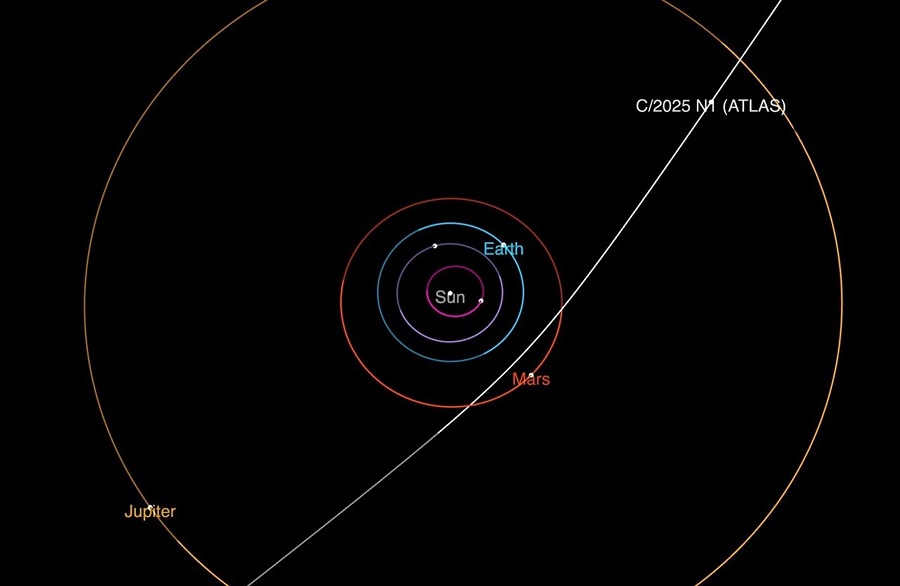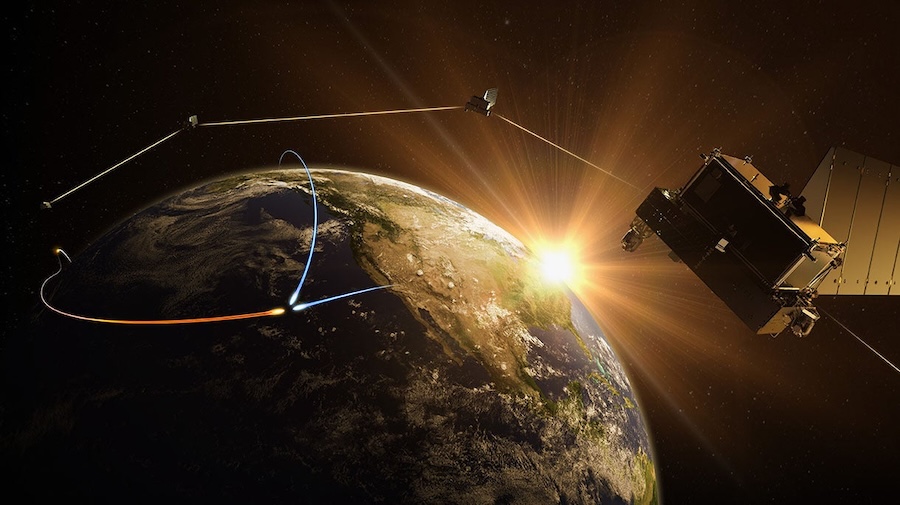Since that first report, observations from before the discovery have been gathered from the archives of three different ATLAS telescopes around the world and the Zwicky Transient Facility at the Palomar Observatory in San Diego County, California. These “pre-discovery” observations extend back to June 14. Numerous telescopes have reported additional observations since the object was first reported.
The comet poses no threat to Earth and will remain at a distance of at least 1.6 astronomical units (about 150 million miles or 240 million km). It is currently about 4.5 au (about 416 million miles or 670 million km) from the Sun. 3I/ATLAS will reach its closest approach to the Sun around Oct. 30, at a distance of 1.4 au (about 130 million miles or 210 million km) — just inside the orbit of Mars.
The interstellar comet’s size and physical properties are being investigated by astronomers around the world. 3I/ATLAS should remain visible to ground-based telescopes through September, after which it will pass too close to the Sun to observe. It is expected to reappear on the other side of the Sun by early December, allowing for renewed observations.































